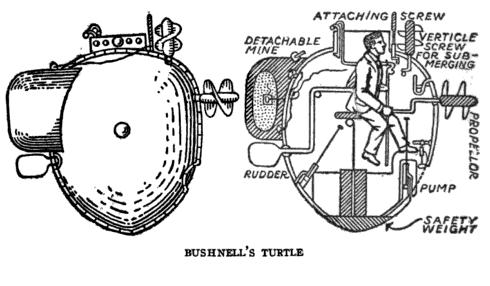On the eve of a watershed event in Indian Naval History, appropriately set on the 10th anniversary of Vijay Divas, lets trace the spirit and determination that led to these fascinating machines of the deep.
In writing this post, I share my appreciation for what it takes to build something as amazing as the INS Arihant. The media attention and all the congratulations on this day is encouraging, but I wonder what will happen if a mishap happens with this new experiment, as with any first project? Will we support the effort through thick and thin? Will we allow the learning process to continue through successes and failures? Or will we join the chorus of folks criticizing what a waste of money it is and how pathetic we are in huge projects? As promised in Visakhapatnam on the map with ATV, here is the first in a series of posts...
First known record of submarines appears in 1580. The initial construction and evolution of submarines was driven by obsessed inventors of Europe and America. The story of submarines is littered with relentless inventors who fought incredible odds, some of whom lost everything in this dogged pursuit, even their lives. Over the next couple of centuries, stealth and surprise, offered by these machines have made them an interesting tool in warfare. The developments hence moved away from individual inventors to governments spending huge amount of resources (financial, material and human) in pursuit of better machines.
Timeline - Individual contributors
- 1580 : Englishman Willian Bourne, an inn keeper, mathematician and a former Navy gunner suggested first recorded theoretical account of how to keep a machine submerged under water and bring it to surface when needed, ie. fill the boat with water to submerge and expel water to surface (using ballast tanks)
- 1623 : A Dutch inventor Cornelius Drebbel from the court of King James I built the first submarine. It was essentially a modified rowboat that could go up to 15 Ft below water surface. The forward motion of the boat automatically pushed the boat underwater (opposite of "drag" that helps a moving aircraft to takeoff). Stopping the boat automatically makes it float to the surface, just like a slowing aircraft lands.
- 1653 : Frenchman De son built a 72-ft long semi-submersible (barely floats instead of diving) vessel for the Belgians to attack the English Navy. It was supposed to sneak up and punch a hole in the ships of British fleet. This is the first such machine built for war, though it was never used.
- 1729 : English carpenter Nathaniel Symons for the first time built a machine that resembled what William Bourne theorised in 1580. Though, it could not move under water, it demonstrated how to control diving and surfacing using ballast tanks (take water to submerge and release water to float). This forms the basis for all current submarines.
- 1776 : American (then a British colony) David Bushnell built what was referred to as "Turtle". This one-man machine performed most of the functions, current submarines perform. It submerges, moves under water and for the first time even was used in war. Though the mission did not succeed.

- 1800 : American Robert Fulton courted the French and built a 25-foot vessel called "Nautilus" (familiar name to the fans of "20,000 leagues under the sea") for the French to attack British vessels. Nautilus achieved successful dives of up to 25 feet and last up to 6 hours. However, owing to "morality" of sneaking up on ships, Fulton had disagreements with French and later on British and scraped the "Nautilus".
- 1850 : German Wilhelm Bauer's first submarine "Brandtaucher" sunk during trials with him and his crew. He survived and tried to sell his invention to several European governments until Russia showed some interest. His second submarine was demonstrated. On the even of coronation of the Tzar, he took a band of musicians in the submarine to play the national anthem, which was audible from under the water. But it never saw action in war.
References:
- History of Submarines
- Weapons and Warfare, An Illustrated history of their impact : Submarines" by Paul E Fontenoy
No comments:
Post a Comment